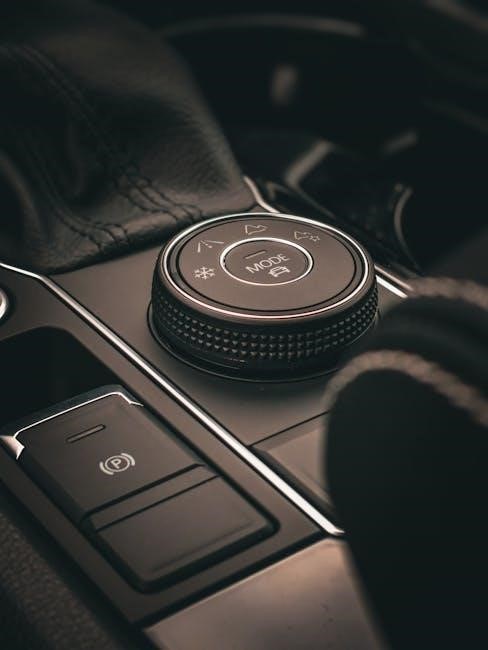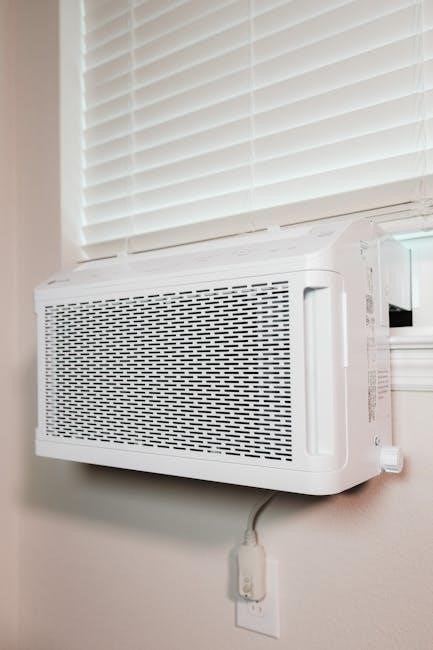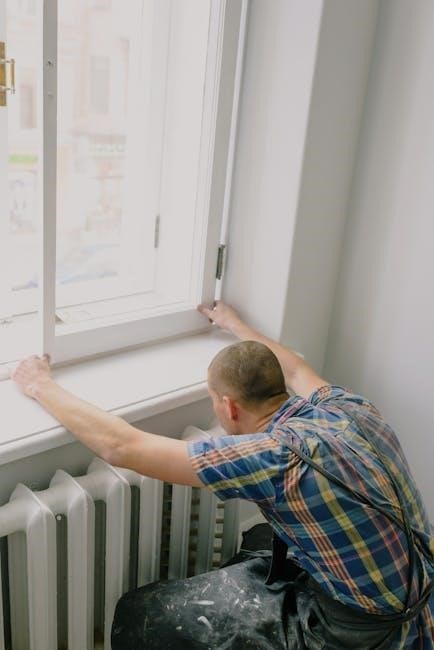Converting power windows to manual offers cost savings and reliability, ideal for vehicle owners seeking simpler, low-maintenance window mechanisms without compromising functionality.

Overview of the Conversion Process
The process involves disconnecting power window motors, removing electrical components, and installing manual mechanisms. Each vehicle may require specific steps, but the core idea remains consistent. The conversion typically starts with assessing the existing system, followed by physical removal of power-related parts. Manual regulators are then fitted, and linkages are adjusted for smooth operation. This approach eliminates reliance on electrical systems, offering a simplified, mechanical solution for window control. Proper alignment and testing ensure reliable operation post-conversion.
Importance of Understanding the Differences Between Power and Manual Windows
Understanding the differences between power and manual windows is crucial for a successful conversion. Power windows rely on electric motors and switches, while manual windows use cranks and mechanical linkages. Recognizing these distinctions helps in selecting the right tools and materials. It also ensures proper removal of electrical components and installation of manual mechanisms. This knowledge prevents potential errors and guarantees a smooth transition, making the process more efficient and less prone to issues.

Understanding Power Windows and Their Mechanism
Power windows are electrically operated, using motors, switches, and wiring to raise or lower the glass. This mechanism provides convenience but relies on complex components that can fail over time.
How Power Windows Operate
Power windows are electrically operated, relying on a motor, switch, and wiring to function. When the user presses the window switch, an electrical signal activates the motor, which then rotates to move the window up or down. The system includes a regulator assembly with a cable and pulley mechanism to guide the glass smoothly. Modern systems often feature auto-up/-down functions and anti-pinch sensors for safety. If the motor or switch fails, the window becomes inoperable, highlighting the complexity of power window systems compared to manual ones.

Components Involved in Power Window Systems
Power window systems consist of several key components, including a window motor to drive the glass, a switch to control the motor, and a wiring harness to connect the electrical circuit. The system also includes a regulator assembly with a cable and pulley mechanism to guide the window’s movement. Additionally, the glass panel itself and its weatherstripping are essential parts. Modern systems may feature an electronic control unit and sensors for advanced functionality like obstacle detection and anti-pinch safety. These components work together to provide smooth, automated window operation.

Tools and Materials Needed for the Conversion
The process requires essential tools like screwdrivers, pliers, and wrenches, along with materials such as manual window regulators, handles, and fasteners to complete the conversion effectively.
Essential Tools for the Conversion Process
The conversion requires a set of tools, including screwdrivers, pliers, wrenches, and Torx bits, to dismantle the power window components. Additionally, a screw gun and punches are necessary for removing old motors and regulators. Safety tools like gloves and goggles are recommended to prevent injuries. Proper work lighting ensures visibility during the process. These tools are essential to efficiently and safely replace the power window system with a manual one, ensuring a smooth conversion experience.
Materials Required to Complete the Conversion
The conversion process requires manual window regulators, window cranks, and mounting hardware to replace the power system. Additional materials include fasteners, adhesives, and lubricants to secure and maintain the new components. A repair kit for the door panel may be necessary if any damage occurs during removal. These materials ensure the manual window system functions smoothly and reliably after the conversion. Proper selection and use of these components are crucial for a successful and durable result.

Step-by-Step Guide to Converting Power Windows to Manual
This guide outlines the process of replacing power windows with manual mechanisms, ensuring a smooth transition from motorized to non-motorized window operation.
Assessing the Feasibility of the Conversion
Evaluating the practicality of converting power windows to manual involves considering factors like cost, maintenance, and vehicle compatibility. Ensure the manual mechanism fits your vehicle’s make and model. Additionally, assess whether the conversion aligns with your long-term goals for the vehicle. Consulting repair manuals or experts can provide clarity on potential challenges and confirm if the process is viable for your specific car. This step ensures a smooth and successful transition to manual windows.
Disconnecting and Removing Power Window Motors
Begin by disconnecting the car battery to prevent electrical shocks. Remove the door panel and trim to access the power window motor. Carefully disconnect the wiring harness connected to the motor and regulator assembly. Use a wrench to remove the bolts securing the motor to the door frame. Gently pull the motor out, taking note of any clips or brackets holding it in place. Once removed, the door is prepared for installing the manual window mechanism, ensuring a smooth transition to manual operation.
Installing Manual Window Mechanisms
Mount the manual window regulator into the door frame, aligning it with the existing bolt holes. Secure it using the provided bolts, ensuring tightness without over-tightening. Attach the window crank handle to the regulator’s gear, making sure it rotates smoothly. Reconnect the window glass to the regulator’s arms, adjusting for proper alignment. Test the mechanism by turning the crank to ensure the window moves up and down effortlessly. Finally, reattach the door panel and test the window operation to confirm everything functions correctly.
Testing and Adjusting the Manual Windows
After installation, test the manual window by turning the crank to ensure smooth operation. Check for proper alignment and full range of motion. If the window binds or moves unevenly, adjust the regulator or gear alignment. Verify that the window stays in place when fully raised or lowered. Lubricate moving parts if necessary for smoother operation. Repeat the process for all windows to ensure consistency. Finally, inspect the installation for any gaps or misalignment and make adjustments as needed for optimal performance.

Potential Challenges and Solutions
Common challenges include misaligned components and crank fit issues. Solutions involve precise alignment tools and adjustment techniques to ensure smooth operation and proper functionality.

Common Issues Encountered During Conversion
During the conversion, misalignment of mechanical components is a frequent issue, leading to improper window operation. Additionally, worn or damaged gears can cause manual regulators to malfunction. Ensuring precise alignment and replacing damaged parts with high-quality alternatives are critical to achieving smooth functionality. Proper lubrication of moving parts can also prevent sticking or seizing, ensuring the manual system operates efficiently. Addressing these issues early can prevent more severe problems down the line.
Troubleshooting Tips for Manual Window Installation
If the manual window doesn’t move smoothly, check for proper alignment and ensure all screws are securely tightened. Lubricate moving parts with silicone-based spray to prevent sticking. Inspect the regulator for worn or bent components and replace them if necessary. Adjust the window track alignment carefully to avoid uneven operation. Regularly inspect and maintain the mechanism to ensure long-term functionality. Addressing these issues promptly can help maintain the reliability of your manual window system.

Benefits of Converting to Manual Windows
Converting to manual windows offers reduced maintenance, eliminated electrical dependencies, and cost savings on repairs. It simplifies the system, making it more reliable and energy-efficient.
Cost Savings and Reduced Maintenance
Converting power windows to manual systems significantly reduces long-term maintenance costs. Manual mechanisms eliminate the need for expensive electrical components like motors and switches, lowering repair expenses. This switch also minimizes the risk of electrical failures, which are common in power window systems. Additionally, manual windows are energy-efficient, as they don’t rely on the car’s battery, making them a cost-effective and practical solution for vehicle owners seeking reliability and simplicity.
Improved Reliability and Simplicity
Manual windows offer enhanced reliability by eliminating complex electrical systems prone to malfunctions. With fewer moving parts, there’s less likelihood of mechanical failure, ensuring consistent performance. This simplicity reduces the need for specialized tools or expertise, making repairs easier and faster. Additionally, manual systems are less susceptible to issues like blown fuses or motor burnout, fostering long-term durability and peace of mind for drivers. This straightforward design makes manual windows a dependable choice for everyday use.
Converting power windows to manual offers cost savings and reliability, ideal for vehicle owners seeking simpler, low-maintenance window mechanisms without compromising functionality.
Final Thoughts on Power Window to Manual Conversion
The transition from power to manual windows is a practical choice for car owners seeking simplicity and cost efficiency. This conversion minimizes reliance on complex electrical systems, reducing maintenance needs and potential failures. While modern vehicles emphasize power features, manual windows offer a reliable, straightforward solution, especially for classic or older cars. However, careful planning and execution are essential to ensure smooth functionality and durability. This approach aligns with eco-friendly and budget-conscious automotive practices, making it a viable option for many drivers.
